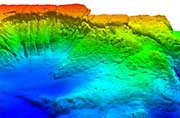

“With their unique ability for underwater flight and unprecedented range, speed and maneuverability, Hawkes DeepFlight submersibles make it easier and more cost effective to explore parts of the ocean that were previously out of reach — offering the potential to significantly expand scientific knowledge of the ocean that covers nearly three-fourths of the Earth’s surface,” indicated 4-Traders Online.
As Inventor of the Month, the company combines the best in design together with imagination. There are many geospatial and geomatic technologies that perform tasks and provide data above the ocean surface, but there are far fewer capable of monitoring, measuring and capturing real-time data in a similar way.
Not that there are no technologies, but the ocean is vast and we already have evidence that it is difficult to continually monitor. Efforts involving tsunami measurements and monitoring, undersea volcanology and even locating all of the world’s ocean biodiversity continue to test our abilities (recently 67 new species have been found in ocean’s).
The design and development of spatial tools and technologies for oceanographic data capture will continue to grow. We should maintain a sense of inspiration, awe and curiosity about the oceans to the same extent that we do space. It would most certainly help to push us to innovate and invest more in ocean discovery and knowledge.
